183 have author last names that start with B have author last names that start with B
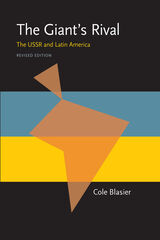
This revised edition includes chapters analyzing developments since 1983. Blasier views the origins of the Sandinista revolution, and its relation to international Communism, and how the Nicaraguan government has grown dependent on Soviet oil, arms, and economic and political assistance. He also describes the growing relations between the New Jewel Movement in Grenada and Moscow before it was toppled by the U.S. invasion. Blasier explains how U.S. policies have affected Soviet outcomes and makes proposals for protecting and advancing U.S. interests.
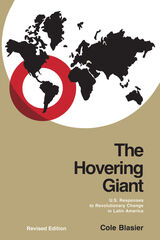
In the first edition of The Hovering Giant, Cole Blasier analyzed U.S. response to revolutions in Latin America from Madero in Mexico to Allende in Chile. He explained why U.S. leaders sponsored paramilitary units to overthrow revolutionary governments in Guatemala and Cuba and compromised their own differences with revolutionary governments in Mexico and Bolivia. The protection of private U.S. interests was part of the explanation, but Blasier gave greater emphasis to rivalry with Germany or the Soviet Union.
Now in this revised edition, Blasier also examines the responses of the Carter and Reagan administrations to the Grenadian and Nicaraguan revolutions and the revolt in El Salvador. He also brings up to date the interpretation of U.S.-Cuban relations.
Blasier stresses U.S. defense of its preeminent position in the Caribean Basin, as well as rivalry with the Soviet Union, to explain these later U.S. responses. Seemingly unaware of historical experience, Washington followed patterns in Central America and Grenada similar to earlier patterns in Guatemala, Cuba, and Chile even though the latter had adverse effects on U.S. security and economic interests.
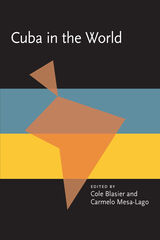
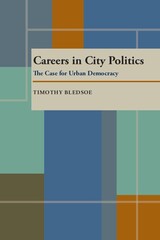
Timothy Bledsoe bases his findings on the political careers of more than eight-hundred city council members representing cities with large and medium populations. Tracing how some officials' careers unfolded over five years, Bledsoe studies their reasons for seeking office and examines how successful they were in adapting to their jobs. He evaluates office-holders whose council careers were cut short and those whose lengthy service qualified them as “careerists,” paying special attention to first-term officials and to those who used their seats as stepping-stones to higher political offices. In this first-of-its-kind study, Bledsoe offers specific recommendations for restoring some of the lost vigor to local politics.

Selected by C. Michael Curtis
The characters in Brett Ellen Block’s debut collection of short stories may know their destinations, but they don’t always rush to them. From a runaway on an ice cream truck to a down-and-out retiree in a porn shop, they struggle to face both their pasts and their futures.
In a series of tightly focused and deftly drawn vignettes, Block explores the detours, potholes, and speed bumps along the road of life. These are stories about people at loose ends in their lives, coming to the realization that they can’t always sit back and enjoy the ride. Whether they’re committing petty larceny, moping their way through the winding streets and canals of Venice, or seeking to escape North Carolina’s Outer Banks, Block’s characters are learning to get behind the wheel and take control.

A comprehensive book that covers all aspects of choreography from the most fundamental techniques to highly sophisticated artistic concerns. The Intimate Act of Choreography presents the what and how of choreography in a workable format that begins with basics- - time, space, force -- and moves on to the more complex issues faced by the intermediate and advanced choreographer -- form, style, abstraction, compositional structures, and choreographic devices.
The format of the book evolved from the idea that improvisation is a good way to learn choreography. This approach is in harmony with widely accepted dance philosophies that value the unique quality of each individual’s creativity. After discussing a concept, the authors provide improvisations, and choreographic studies that give the student a physical experience of that concept. The language is stimulating an innovative, rich in visual images that will challenge the choreographer to explore new directions in movement.
The book is for serious dance students and professionals who are interested in both the practical and theoretical aspects of the art, dancers who are just starting to choreograph, and teachers who are seeking fresh ideas and new approaches to use with young choreographers. (A Teacher’s Addendum offers suggestions on how to use the material in the classroom.) It is a guide, a text, and an extensive resource of every choreographic concept central to the art form.
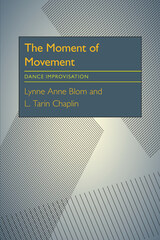
Dance improvisation, the intriguing phenomenon of the creative process alive in the moving body, exists powerfully, sublimely - lending insight, solving problems, allowing moments of transcendence, diversion, and delight. Flourishing especially since the postmodern movement of the 1960s, it has come into its own in the performing arts. While there are many books containing ideas for developing improvisations, few have tackled the difficult questions: “What is dance improvisation?” “How does it work?” or “What is its body of knowledge?”
The Moment of Movement goes beyond lists of improvisations and into the heart of improvising. As in their previous book, The Intimate Act of Choreography, the authors pursue both the philosophical and the practical. They begin by examining the creative process as it applies to movement and especially the kinesthetic way in which the body knows and uses movement. They answer the often unstated and pertinent questions of the novice; investigate the particular skills and traits needed by the leader; consider ways of working with specific populations; and provide challenging material for advanced movers. They discuss the use of music, and the specific situation of improvisation in performance. For leaders who want to design their own improvisations, they trace the evolution of an idea into an actual content and structure. They also address the controversial issue of the legitimacy of improvisation in an academic curriculum. A final chapter presents hundreds of improvs and improv ideas, grouped into units and cross-referenced.
The Moment of Movement is not tied to any one point of view. The authors’ presentation of a broad range of material is flexible enough for use by choreographers, directors, educators, and therapists. In its perceptive investigation of the experiential and conceptual aspects of dance improvisation, this book articulates the ephemeral.
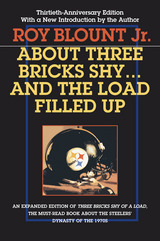
Any number of writers could spend an entire season with an NFL team, from the first day of training camp until the last pick of the draft, and come up with an interesting book. But only Roy Blount Jr. could capture the pain, the joy, the fears, the humor—in short, the heart—of a championship team.
In 1973, the Pittsburgh Steelers were super, but missed the bowl. Blount’s portrait of a team poised to dominate the NFL for more than a decade recounts the gridiron accomplishments and off-the-field lives of players, coaches, wives, fans, and owners. About Three Bricks Shy . . . is considered a classic; Sports Illustrated recently named it one of the Top 100 Sports Books of All Time. This thirtieth-anniversary edition includes additional chapters on the Steelers’ Super Bowl wins, written for the 1989 paperback, as well as a new introduction by the author.
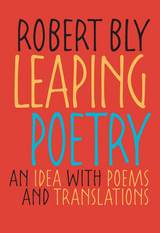
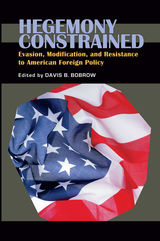
An international group of contributors considers how and why a variety of foreigners act strategically to avoid, delay, or change American policy with respect to a broad range of issues in world affairs. Individual chapters analyze the Kurds and Shia in Iraq; the governments of China, Japan, Turkey, and Germany; the G-7; liberalizing the international economy; coping with global warming; regulating harmful tax competition; controlling missile proliferation; limiting public health damage from tobacco; and international public opinion bearing on the politics of responding to a hegemonic America.
By recognizing and illustrating moves that challenge American unilateralism, Hegemony Constrained provides a framework for understanding and anticipating the goals, motives, and means others in the world bring to their dealings with American hegemony in specific situations. Thus, it offers a corrective to naively optimistic unilateralism and naively optimistic multilateralism.
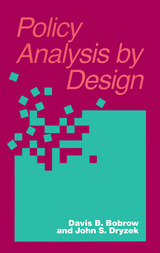
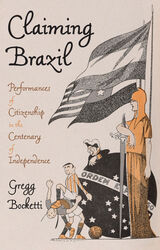
Brazil marked its centennial as an independent country in 1922. Claiming Brazil explores how Brazilians from different walks of life commemorated the event, and how this led to conflicting ideas of national identity. Civic rituals hold enormous significance, and Brazilian citizens, immigrants, and visitors employed them to articulate and perform their sense of what Brazil was, stood for, and could be. Gregg Bocketti argues that these celebrations, rather than uniting the country, highlighted tensions between modernity and tradition, over race and ethnicity, and between nation and region. Further, the rituals contributed to the collapse of the country’s social and political status quo and gave substance to the debates and ideas that characterized Brazilian life in the 1920s and then under the transformative rule of Getúlio Vargas (1930–1945). Now, at the bicentennial of Brazil’s independence, which itself unfolds in a period of political crisis and economic dislocation, and in the aftermath of several large civic events, it is an opportune moment to consider how Brazilians used civic rituals to engage with questions of identity, belonging, and citizenship one hundred years ago.

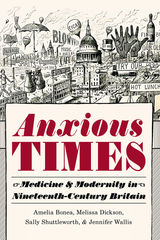
Much like the Information Age of the twenty-first century, the Industrial Age was a period of great social changes brought about by rapid industrialization and urbanization, speed of travel, and global communications. The literature, medicine, science, and popular journalism of the nineteenth century attempted to diagnose problems of the mind and body that such drastic transformations were thought to generate: a range of conditions or “diseases of modernity” resulting from specific changes in the social and physical environment. The alarmist rhetoric of newspapers and popular periodicals, advertising various “neurotic remedies,” in turn inspired a new class of physicians and quack medical practices devoted to the treatment and perpetuation of such conditions.
Anxious Times examines perceptions of the pressures of modern life and their impact on bodily and mental health in nineteenth-century Britain. The authors explore anxieties stemming from the potentially harmful impact of new technologies, changing work and leisure practices, and evolving cultural pressures and expectations within rapidly changing external environments. Their work reveals how an earlier age confronted the challenges of seemingly unprecedented change, and diagnosed transformations in both the culture of the era and the life of the mind.
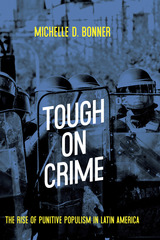
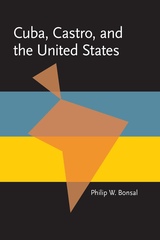
His discussion of Castro's personality is incisive, portraying the Maximum Leader's increasing animosity toward the United States until the final break-off of diplomatic relations between the two countries. Bonsal's observations of Castro and the sociopolitical climate in Cuba are perhaps the most incisive and accurate of any to date on the subject.
All the events from the Revolution to the termination of diplomatic relations are discussed. Of particular interest are Bonsal's accounts of his attempt to find a basis for a rational relationship between the United States and Castro's Revolution, the rejection of that attempt by Castro, and the abandonment by Washington of the policy of nonintervention in Cuban affairs which the Ambassador had advocated.
Finally, in an evaluation of future relations between the two countries, Bonsal analyzes some of the major problems of the coming years.
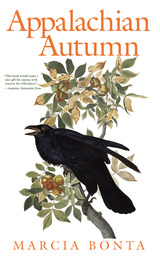
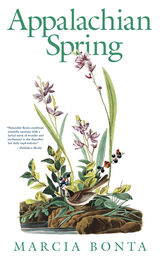
Marcia Bonta is a naturalist-writer who has lived for decades on a five-hundred-acre mountaintop farm in Central Pennsylvania. In Appalachian Spring, the intricacies of the season unravel day by day in journal entries that combine Bonta’s own meticulous observations with the research reported by botanists, entomologists, and other natural scientists.
Every aspect of the natural world catches her eye, from the life cycle of a tent caterpillar to the sex life of jack-in-the pulpit. She hopes, by recounting such wonders, to convert others to what she calls the “third stage” in humanity’s relationship with nature, that of empathy with all of nature for its own sake: “To know the earth better, to grasp a little of its workings, to look on it with awe and wonder as well as with respect, is to want to save it from destruction.”
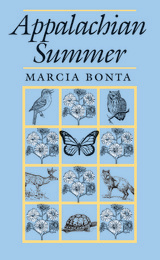

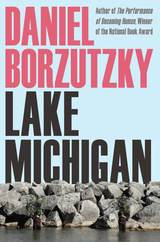
From the author of The Performance of Becoming Human, winner of the National Book Award for poetry
Lake Michigan, a series of 19 lyric poems, imagines a prison camp located on the beaches of a Chicago that is privatized, racially segregated, and overrun by a brutal police force. Thinking about the ways in which economic policy, racism, and militarized policing combine to shape the city, Lake Michigan's poems continue exploring the themes from Borzutzky's Performance of Becoming Human, winner of the National Book Award for Poetry. But while the influences in this book (Césaire, Vallejo, Neruda) are international, the focus here is local as the book takes a hard look at neoliberal urbanism in the historic city of Chicago. Named a 2018 Best Book of the Year by the New York Public Library.

Winner of the 1988 Policy Studies Organization Book Award
Among the more dramatic changes brought by World War II was the widespread introduction of new synthetic chemical pesticides - products welcomed as technological answers to a whole host of agricultural problems. The dangers posed by these products were often ignored in the rush to get them onto the market. Federal policy primarily reflected the interests of those promoting the new technologies. The risks associated with pesticides, as yet ill-understood, continued to be played down during the 1950s, despite their sudden emergence as a public problem as a result of health scares and fish and wildlife deaths following massive pest eradication campaigns. These events, together with the publication of Rachel Carson’s Silent Spring, spawned the environmental movement of the 1960s.
Dramatic changes came in the early 1970s as environmental values permeated the institutions and dynamics of American politics. Such changes produced new priorities, and - in part - a redirection in federal policy on chemical pesticides. The National Environmental Policy Act, the creation of the Environmental Protection Agency, congressional reforms, and broad popular support opened opportunities for those seeking to alter pesticides policy. But by the mid-1980s, after more than a decade of conflict, that policy is in limbo, caught between powerful environmental, economic, and political forces.
How did this happen?
Pesticides and Politics traces the long battle over control of pesticides through an analytical framework that is at the same time historical, comparative, and theoretical. Christopher J. Bosso’s account analyzes the responses to this complex problem by commercial interests, government, the media, and the public, and shows how the issue evolved over forty years of technological and political change.
Bosso’s research leads to a number of insights about the U.S. structure of governance. It shows how the system itself determines who gains access to decision making and who is excluded, and how conflicts are redefined as the range of interests attached to them grows. Bosso concludes that for fundamental institutional reasons, as well as political ones, federal pesticides policy lies stalled and impotent in the mid-1980s.
Relying heavily on government documents, the sizable literature on environmental politics, and interviews with relevant policy actors, Pesticides and Politics will enlighten students of the public policy process, and also be useful in courses in policy making and policy analysis.

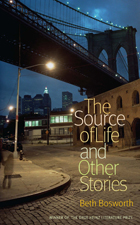
Later he asked, “Would you like to go for a hike sometime?” and two trains of thought left the station: He means to get to know me and we might leave the city together and it’s been a long time since I climbed a mountain. That train chugged into a wider brighter country all the time. The other train went by another route through the panicked interior. He’s a lunatic, it whistled. He’s been in and out of hospitals. He will take you to a mountaintop and throw you right off into the bright air: choo choo!
Post-divorce dating is one more cause for celebration (or a quick call in to the police) in Beth Bosworth’s revelatory new book, The Source of Life and Other Stories. The spine of this collection is a series of linked stories about Ruth Stein, a Brooklyn author whose first book has exposed her father’s abuses; while the voice here, speaking across a lifetime, ranges from bittersweet to humorous to lethal. In other stories Bosworth’s narrators—a mother left to care for her son’s suicidal dog, an editor haunted by a dog-eared manuscript—seem to grab hold of the reins and run off with their fates. Meanwhile Bosworth explores the extended family, the bonds of friendship, an apocalyptic Vermont, the rank yet redeemable Gowanus Canal; also rites of passage, race relations, divorce, middle-aged romance, dementia, funerals, alcoholism, and the Jewish religion. Reality is just another stumbling block for Bosworth’s characters, who might help themselves but don’t always choose to. There are leaps of faith here, nonetheless, as the collection dispenses a kind of narrative psychotropic for survival and redemption, with a chaser of humor mixed in.
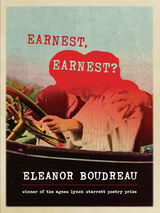
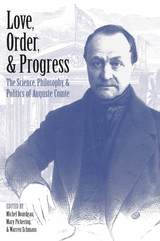
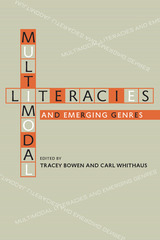
of meaningmaking?
Today, multiple modes of communication and information technology are challenging pedagogies in composition and across the disciplines. Writing instructors grapple with incorporating new forms into their curriculums and relating them to established literary practices. Administrators confront the application of new technologies to the restructuring of courses and the classroom itself.
Multimodal Literacies and Emerging Genres examines the possibilities, challenges, and realities of mutimodal composition as an effective means of communication. The chapters view the ways that writing instructors and their students are exploring the spaces where communication occurs, while also asking “what else is possible.” The genres of film, audio, photography, graphics, speeches, storyboards, PowerPoint presentations, virtual environments, written works, and others are investigated to discern both their capabilities and limitations. The contributors highlight the responsibility of instructors to guide students in the consideration of their audience and ethical responsibility, while also maintaining the ability to “speak well.” Additionally, they focus on the need for programmatic changes and a shift in institutional philosophy to close a possible “digital divide” and remain relevant in digital and global economies.
Embracing and advancing multimodal communication is essential to both higher education and students. The contributors therefore call for the examination of how writing programs, faculty, and administrators are responding to change, and how the many purposes writing serves can effectively converge within composition curricula.
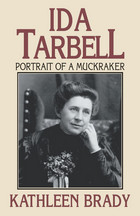
Ida Tarbell’s generation called her “a muckraker” (the term was Theodore Roosevelt’s, and he didn’t intend it as a compliment), but in our time she would have been known as “an investigative reporter,” with the celebrity of Woodward and Bernstein. By any description, Ida Tarbell was one of the most powerful women of her time in the United States: admired, feared, hated. When her History of the Standard Oil Company was published, first in McClure’s Magazine and then as a book (1904), it shook the Rockefeller interests, caused national outrage, and led the Supreme Court to fragment the giant monopoly.
A journalist of extraordinary intelligence, accuracy, and courage, she was also the author of the influential and popular books on Napoleon and Abraham Lincoln, and her hundreds of articles dealt with public figures such as Louis Pateur and Emile Zola, and contemporary issues such as tariff policy and labor. During her long life, she knew Teddy Roosevelt, Jane Addams, Henry James, Samuel McClure, Lincoln Stephens, Herbert Hoover, and many other prominent Americans. She achieved more than almost any woman of her generation, but she was an antisuffragist, believing that the traditional roles of wife and mother were more important than public life. She ultimately defended the business interests she had once attacked.
To this day, her opposition to women’s rights disturbs some feminists. Kathleen Brady writes of her: “[She did not have] the flinty stuff of which the cutting edge of any revolution is made. . . . Yet she was called to achievement in a day when women were called only to exist. Her triumph was that she succeeded. Her tragedy ws that she was never to know it.”
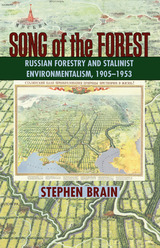
The Soviets are often viewed as insatiable industrialists who saw nature as a force to be tamed and exploited. Song of the Forest counters this assumption, uncovering significant evidence of Soviet conservation efforts in forestry, particularly under Josef Stalin. In his compelling study, Stephen Brain profiles the leading Soviet-era conservationists, agencies, and administrators, and their efforts to formulate forest policy despite powerful ideological differences.
By the time of the revolution of 1905, modern Russian forestry science had developed an influential romantic strand, especially prevalent in the work of Georgii Morozov, whose theory of “stand types” asked forest managers to consider native species and local conditions when devising plans for regenerating forests. After their rise to power, the Bolsheviks turned their backs on this tradition and adopted German methods, then considered the most advanced in the world, for clear-cutting and replanting of marketable tree types in “artificial forests.” Later, when Stalin’s Five Year Plan required vast amounts of timber for industrialization, forest radicals proposed “flying management,” an exaggerated version of German forestry where large tracts of virgin forest would be clear-cut. Opponents who still upheld Morozov’s vision favored a conservative regenerating approach, and ultimately triumphed by establishing the world’s largest forest preserve.
Another radical turn came with the Great Stalin Plan for the Transformation of Nature, implemented in 1948. Narrow “belts” of new forest planted on the vast Russian steppe would block drying winds, provide cool temperatures, trap moisture, and increase crop production. Unfortunately, planters were ordered to follow the misguided methods of the notorious Trofim Lysenko, and the resulting yields were abysmal. But despite Lysenko, agency infighting, and an indifferent peasant workforce, Stalin’s forestry bureaus eventually succeeded in winning many environmental concessions from industrial interests. In addition, the visionary teachings of Morozov found new life, ensuring that the forest’s song did not fall upon deaf ears.
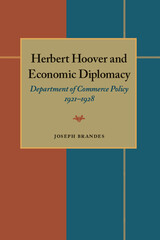
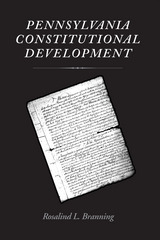
Pennsylvania Constitutional Development has proven to be the definitive study of the history of Pennsylvania's constitution in its first four incarnations. Rosalind Branning's critique, first published in 1960, reflects the movement that led to the constitution of 1968. After tracing the history of the 1776 constitution and its earliest revisions--in 1790 and 1838--Branning primarily focuses on the constitutional convention of 1872-73 and the resulting document of 1874, which endured for almost a century. She uses the published <I>Debates</I>, newspaper files, and the observations of contemporary writers and statesmen to provide a detailed and engaging study of the politics and leadership of the time. Her analysis demonstrates that this constitutional convention produced an instrument that was designed to meet nineteenth-century needs but would need significant revisions by future generations. Foreseeing the very issues that would be addressed in the 1967-68 constitutional convention, Branning identifies the elements that are necessary for successful constitutional lawmaking.
The evolution of Pennsylvania's body of laws serves as a cogent example of the opportunities and foibles intrinsic to the process of defining effective governance of a state. Pennsylvania Constitutional Development remains an essential resource for students and historians, and should be read by anyone interested in the government of the Keystone State.

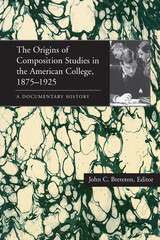
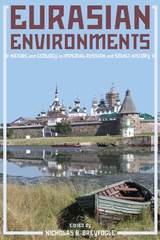
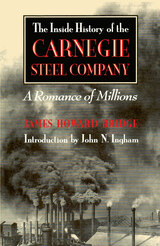
Three years later, James Bridge, who had served as Carnegie's personal secretary, published this book. In it he recounted the events that led up to the final confrontation between two of America's most powerful capitalists. The book created a sensation when it appeared in 1903. Not only did it describe the raw emotions of Carnegie and Frick, those most brilliant and uneasy of business partners, it also told of the history and inner workings of the industrial giant, Carnegie Steel.
Bridge was an open partisan of Frick, and the portrait of Carnegie that emerges from this book is not flattering. But he was an experienced journalist, and he uses sources carefully. His book remains a striking insider's narrative of the American steel industry in the last decades of the nineteenth century-as well as the most revealing account of the emotions of some of its major owners.
The introduction by John Ingram places the book in perspective for both the historian and general reader.

The first book-length study of Richard Wright (1908–1960) gives a critical, historical, and biographical perspective on the gifted African American writer. It presents Wright not only as an artist whose subjects and themes were affected by his race, but also as a sensitive and talented man who was deeply immersed in the major social and intellectual movements of his day.
Brigano discusses Wright’s artistry and his major public concerns as revealed in his novels, short stories, essays, and poetry: race relations in the United States, the role of Marxism in recent history and the future, the direction of international affairs, and the modes of modern personal and social philosophies.

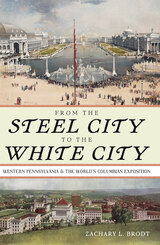
In From the Steel City to the White City, Zachary Brodt explores Western Pennsylvania’s representation at Chicago’s Columbian Exposition, the first major step in demonstrating that Pittsburgh was more than simply America’s crucible—it was also a region of developing culture and innovation. The 1893 Columbian Exposition presented a chance for the United States to prove to the world that it was an industrial giant ready to become a global superpower. At the same time, Pittsburgh, a commercial center that formerly served as a starting point for western expansion, found itself serving as a major transportation, and increasingly industrial, hub during this period of extensive growth. Natural resources like petroleum and coal allowed Western Pennsylvania to become one of the largest iron- and steel-producing regions in the world. The Chicago fairgrounds provided a lucrative opportunity for area companies not only to provide construction materials but to display the region’s many products. While Pittsburgh’s most famous contributions to the 1893 World’s Fair—alternating current electricity and the Ferris wheel—had a lasting impact on the United States and the world, other exhibits provided a snapshot of the area’s industries, natural resources, and inventions. The success of these exhibits, Brodt reveals, launched local companies into the twentieth century, ensuring a steady flow of work, money, and prestige
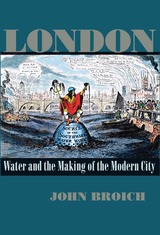
As people crowded into British cities in the nineteenth century, industrial and biological waste byproducts and then epidemic followed. Britons died by the thousands in recurring plagues. Figures like Edwin Chadwick and John Snow pleaded for measures that could save lives and preserve the social fabric.
The solution that prevailed was the novel idea that British towns must build public water supplies, replacing private companies. But the idea was not an obvious or inevitable one. Those who promoted new waterworks argued that they could use water to realize a new kind of British society—a productive social machine, a new moral community, and a modern civilization. They did not merely cite the dangers of epidemic or scarcity. Despite many debates and conflicts, this vision won out—in town after town, from Birmingham to Liverpool to Edinburgh, authorities gained new powers to execute municipal water systems.
But in London local government responded to environmental pressures with a plan intended to help remake the metropolis into a collectivist society. The Conservative national government, in turn, sought to impose a water administration over the region that would achieve its own competing political and social goals. The contestants over London’s water supply matched divergent strategies for administering London’s water with contending visions of modern society. And the matter was never pedestrian. The struggle over these visions was joined by some of the most colorful figures of the late Victorian period, including John Burns, Lord Salisbury, Bernard Shaw, and Sidney and Beatrice Webb.
As Broich demonstrates, the debate over how to supply London with water came to a head when the climate itself forced the endgame near the end of the nineteenth century. At that decisive moment, the Conservative party succeeded in dictating the relationship between water, power, and society in London for many decades to come.

Outside of music, the importance of sound and listening have been greatly overlooked in Latin American history. Visual media has dominated cultural studies, affording an incomplete record of the modern era. This edited volume presents an original analysis of the role of sound in Latin American and Caribbean societies, from the late nineteenth century to the present. The contributors examine the importance of sound in the purveyance of power, gender roles, race, community, religion, and populism. They also demonstrate how sound is essential to the formation of citizenship and nationalism.
Sonic media, and radio in particular, have become primary tools for contesting political issues. In that vein, the contributors view the control of radio transmission and those who manipulate its content for political gain. Conversely, they show how, in neoliberal climates, radio programs have exposed corruption and provided a voice for activism.
The essays address sonic production in a variety of media: radio; Internet; digital recordings; phonographs; speeches; carnival performances; fireworks festivals, and the reinterpretation of sound in literature. They examine the bodily experience of sound, and its importance to memory coding and identity formation.
This volume looks to sonic media as an essential vehicle for transmitting ideologies, imagined communities, and culture. As the contributors discern, modern technology has made sound ubiquitous, and its study is therefore crucial to understanding the flow of information and influence in Latin America and globally.
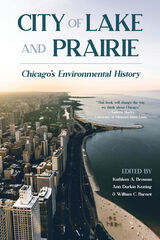

From majestic Amazonian macaws and highland Andean hawks to tiny colorful tanagers and tall flamingos, birds and their feathers played an important role in the Inka empire. Claudia Brosseder uncovers the many meanings that Inkas attached to the diverse fowl of the Amazon, the eastern Andean foothills, and the highlands. She shows how birds and feathers shaped Inka politics, launched wars, and initiated peace. Feathers provided protection against unpredictable enemies, made possible communication with deities, and brought an imagined Inka past into a political present. Richly textured contexts of feathered objects recovered from Late Horizon archaeological records and from sixteenth- and seventeenth-century accounts written by Spanish interlocutors enable new insights into Inka visions of interspecies relationships, an Inka ontology, and Inka views of the place of the human in their ecology. Inka Bird Idiom invites reconsideration of the deep intellectual ties that connected the Amazon and the mountain forests with the Andean highlands and the Pacific coast.

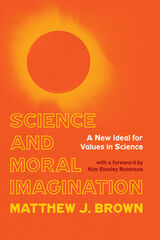
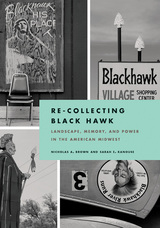
The name Black Hawk permeates the built environment in the upper midwestern United States. It has been appropriated for everything from fitness clubs to used car dealerships. Makataimeshekiakiak, the Sauk Indian war leader whose name loosely translates to “Black Hawk,” surrendered in 1832 after hundreds of his fellow tribal members were slaughtered at the Bad Axe Massacre.
Re-Collecting Black Hawk examines the phenomena of this appropriation in the physical landscape, and the deeply rooted sentiments it evokes among Native Americans and descendants of European settlers. Nearly 170 original photographs are presented and juxtaposed with texts that reveal and complicate the significance of the imagery. Contributors include tribal officials, scholars, activists, and others including George Thurman, the principal chief of the Sac and Fox Nation and a direct descendant of Black Hawk. These image-text encounters offer visions of both the past and present and the shaping of memory through landscapes that reach beyond their material presence into spaces of cultural and political power. As we witness, the evocation of Black Hawk serves as a painful reminder, a forced deference, and a veiled attempt to wipe away the guilt of past atrocities. Re-Collecting Black Hawk also points toward the future. By simultaneously unsettling and reconstructing the midwestern landscape, it envisions new modes of peaceful and just coexistence and suggests alternative ways of inhabiting the landscape.

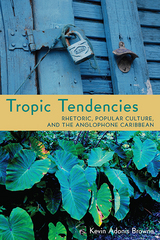
Browne bases his study on the concept of the “Caribbean carnivalesque” as the formative ethos driving cultural and rhetorical production in the region and beyond it. He finds that carnivalesque discourse operates as a “continuum of discursive substantiation” that increases the probability of achieving desired outcomes for both the rhetor and the audience. Browne also views the symbolic and material interplay of the masque and its widespread use to amplify efforts of resistance, assertion, and liberation.
Browne analyzes rhetorical modes and strategies in a variety of forms, including music, dance, folklore, performance, sermons, fiction, poetry, photography, and digital media. He introduces chantwells, calypsonians, old talkers, jamettes, stickfighters, badjohns, and others as exemplary purveyors of Caribbean rhetoric and deconstructs their rhetorical displays. From novels by Earl Lovelace, he also extracts thematic references to kalinda, limbo, and dragon dances that demonstrate the author’s claim of an active vernacular sensibility. He then investigates the re-creation and reinvention of the carnivalesque in cyber culture, demonstrating the ways participants both flaunt and defy normative ideas of “Caribbeanness” in online and macro environments.
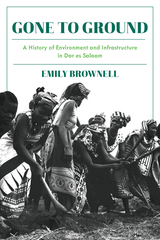
Gone to Ground is an investigation into the material and political forces that transformed the cityscape of Dar es Salaam, Tanzania in the 1970s and early 1980s. It is both the story of a particular city and the history of a global moment of massive urban transformation from the perspective of those at the center of this shift. Built around an archive of newspapers, oral history interviews, planning documents, and a broad compendium of development reports, Emily Brownell writes about how urbanites navigated the state’s anti-urban planning policies along with the city’s fracturing infrastructures and profound shortages of staple goods to shape Dar’s environment. They did so most frequently by “going to ground” in the urban periphery, orienting their lives to the city’s outskirts where they could plant small farms, find building materials, produce charcoal, and escape the state’s policing of urban space.
Taking seriously as historical subject the daily hurdles of families to find housing, food, transportation, and space in the city, these quotidian concerns are drawn into conversation with broader national and transnational anxieties about the oil crisis, resource shortages, infrastructure, and African socialism. In bringing these concerns together into the same frame, Gone to Ground considers how the material and political anxieties of the era were made manifest in debates about building materials, imported technologies, urban agriculture, energy use, and who defines living and laboring in the city.
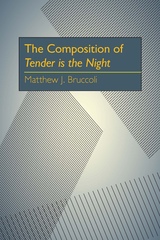
Working with the complete collection of Tender is the Night manuscripts in the Princeton University Library, Matthew J. Bruccoli reconstructs seventeen drafts and three versions of the novel to answer questions about F. Scott Fitzgerald’s major work that have long puzzled critics of modern literature.
In 1934, nine years after the appearance of The Great Gatsby, Fitzgerald permitted publication of Tender is the Night. Disappointed by its critical reception, Fitzgerald suggested that the structure of the novel should be drastically rearranged. In 1951, eleven years after his death, Charles Scribner’s Sons brought out an edition that incorporated Fitzgerald’s changes. Controversy arose over the merits of the two published versions and over the “nine lost years” in Fitzgerald’s life between his two great novels, years of rewriting before publication of Tender is the Night that resulted in six cartons of notes and drafts. After analyzing this wealth of material, Bruccoli reconstructs every working stage in the novel and reaches his own conclusions about which edition is the most valid.
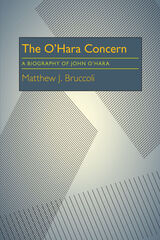

Choice 1997 Outstanding Academic Book
Why have some traditional cold warriors opposed involvement in Iraq and the former Yugoslavia, while many vocal critics of the Vietnam war supported the use of U.S. forces in Somalia, Haiti, and the Balkans? What do these debates tell us about American attitudes toward the use of military force to achieve foreign policy goals? The authors examine the ethical and moral underpinnings of U.S. international relations by exploring the attitudes of decision makers and foreign policy elites toward war. Their unique contribution is to bring together the various doctrines in the literature and to characterize them using behavioral methodologies, in an attempt to bring normative questions back into the mainstream of political science.
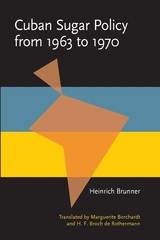
After providing background information on Cuba's prerevolutionary economy, Brunner explores the effects of Communist ideology and the U.S. embargo on the country's resources and trade, and analyzes the problems Cuba faced in shifting from trade with the U.S. to trade with the Soviet Union and Soviet bloc. He evaluates their implementation of the development plan, assessing the sugar industry within Cuba as well as how its accelerated development affected the rest of the domestic economy.
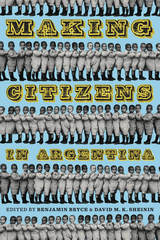
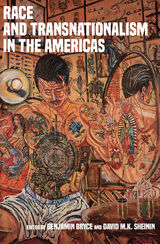
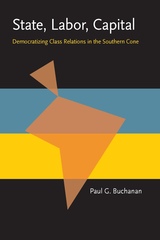
This book argues that because democratic capitalist regimes are founded on a state-mediated class compromise, institutionalizing labor relations is a major concern. Institutions that foster equitable labor-management bargaining are at the foundation of workers' acquiescence to bourgeois rule.
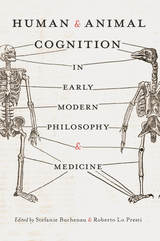
This edited volume focuses on medical and philosophical debates on human intelligence and animal perception in the early modern age, providing fresh insights into the influence of medical discourse on the rise of modern philosophical anthropology. Contributions from distinguished historians of philosophy and medicine focus on sixteenth-century zoological, psychological, and embryological discourses on man; the impact of mechanism and comparative anatomy on philosophical conceptions of body and soul; and the key status of sensibility in the medical and philosophical enlightenment.
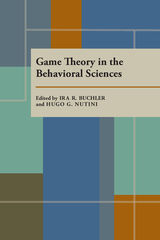
This collection of essays was the first major attempt to apply game theory, linear programming, and graph theory to anthropological data.
Contributors: John Atkins; Ira B. Buchler; Albert M. Chammah; Luke Curtis; Walter Goldschmidt; Hans Hoffman; Robert Kozelka; Bernhardt Lieberman; Frank B. Livingstone; R. Michael McKinlay; Anatol Rapoport; Richard F. Salisbury; T. C. Schelling; M. Shubik; and Martin Southwold.
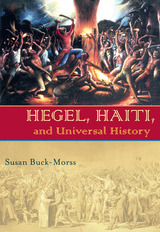
Historicizing the thought of Georg Wilhelm Friedrich Hegel and the actions taken in the Haitian Revolution, Buck-Morss examines the startling connections between the two and challenges us to widen the boundaries of our historical imagination. She finds that it is in the discontinuities of historical flow, the edges of human experience, and the unexpected linkages between cultures that the possibility to transcend limits is discovered. It is these flashes of clarity that open the potential for understanding in spite of cultural differences. What Buck-Morss proposes amounts to a “new humanism,” one that goes beyond the usual ideological implications of such a phrase to embrace a radical neutrality that insists on the permeability of the space between opposing sides and as it reaches for a common humanity.
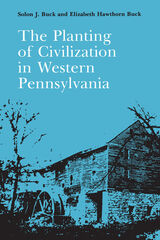
Among the more than one hundred illustrations are contemporary pictures, maps, plans of forts, portraits, architectural photographs and more.
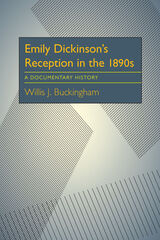
This work reprint, annotates, and indexes virtually all mention of Emily Dickinson in the first decade of her publication, tripling the known references to the poet during the nineties. Much of this material, drawn from scrapbooks of clippings, rare journals, and crumbling newspapers, was on the verge of extinction.
Modern audiences will be struck by the impact of Dickinson’s poetry on her first readers. We learn much about the taste of the period and the relationship between publishers, reviewers, and the reading public. It demonstrates that Dickinson enjoyed a wider popular reception than had been realized: readers were astonished by her creative brilliance.

Past praise from Philip Levine:
“The poems are modest, straight forward, intensely lyrical and totally accessible. . . . This is a humble poetry of great truths and profound emotions that never overstates its concerns for the events both in and above the world. It rewards countless readings and never betrays itself.”
—Ploughshares

Eugenics movements gained momentum throughout Eastern Europe between World Wars I and II. Maria Bucur demonstrates that the importance of the eugenics movement in Romania rests not so much in the contributions made to the study of science as in the realm of nationalist ideology and social policy making.
The notion that the quality and quantity of the human species could and should be controlled manifested itself through social engineering projects ranging from reshaping gender roles and isolating ethnic undesirables to introducing broad public health measures and educational reform. Romanian eugenicists sought to control such modernization processes as urbanization and industrialization without curbing them, yet they also embraced attitudes more typically identified with anti-modernists in Romanian politics and culture.
Bucur is the first historian to explore the role of eugenics as a response to the challenges of nation- and state-building in Eastern Europe. She presents a balanced assessment of the interwar eugenics movement’s success and failures and identifies connections and discontinuities between the movement and the post-war communist regime.
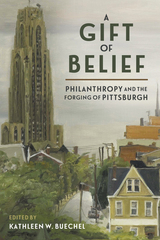
Philanthropy has long been associated with images of industrial titans and wealthy families. In Pittsburgh, long a center for industry, the shadows of Carnegie, Mellon, Frick, and others loom especially large, while the stories of working-class citizens who uplifted their neighbors remain untold. For the first time, these two portraits of Pittsburgh philanthropy converge in a rich historic tapestry. The Gift of Belief reveals how Pittsburghers from every strata, creed, and circumstance organized their private resources for the public good. The industrialists and their foundations are here but stand alongside lesser known philanthropists equally involved in institution building, civic reform, and community empowerment.
Beginning with sectarian philanthropy in the nineteenth century, moving to scientific philanthropy in the early twentieth century and Pittsburgh Renaissance-era institution-building, and concluding with modern entrepreneurship, twelve authors trace how Pittsburgh aligned with, led, or lagged behind the national philanthropic story and explore how ideals of charity and philanthropy entwined to produce distinctive forms of engagement that has defined Pittsburgh’s civic life.
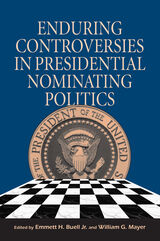
Enduring Controversies in Presidential Nominating Politics retraces the more than two hundred-year history of presidential elections in the United States to provide a primer on how the process has evolved from the days of the founders, through the heyday of nominating conventions, to today’s overwhelming interest in early primaries.
Original essays by the editors introduce, critique, and occasionally even refute a wide variety of historical readings including Alexander Hamilton’s defense of election procedures, excerpts of individual states’ nominations of candidates in 1824, an overview of the impact television has had on nominating conventions, and calls for a national rotating primary scheme in 2004. As a whole, the collection reveals the common threads that run through the history of the nominating process, and points out that today’s litany of complaints is not at all new.
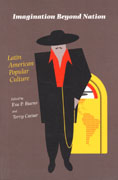
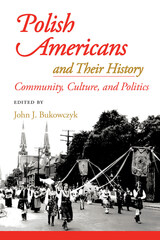
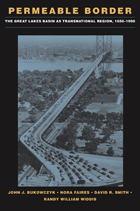
From the colonial era of waterborne transport, through nineteenth-century changes in transportation and communication, to globalization, the history of the Great Lakes Basin has been shaped by the people, goods, and capital crossing and recrossing the U.S.-Canadian border.
During the past three centuries, the region has been buffeted by efforts to benefit from or defeat economic and political integration and by the politics of imposing, tightening, or relaxing the bisecting international border. Where tariff policy was used in the early national period to open the border for agricultural goods, growing protectionism in both countries transformed the border into a bulwark against foreign competition after the 1860s. In the twentieth century, labor migration followed by multinational corporations fundamentally altered the customary pairing of capital and nation to that of capital versus nation, challenging the concept of international borders as key factors in national development.
In tracing the economic development of the Great Lakes Basin as borderland and as transnational region, the authors of Permeable Border have provided a regional history that transcends national borders and makes vital connections between two national histories that are too often studied as wholly separate.
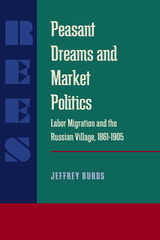
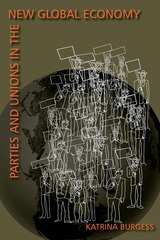
For much of the twentieth century, unions played a vital role in shaping political regimes and economic development strategies, particularly in Latin America and Europe. However, their influence has waned as political parties with close ties to unions have adopted neoliberal reforms harmful to the interests of workers.
What do unions do when confronted with this “loyalty dilemma”? Katrina Burgess compares events in three countries to determine the reasons for widely divergent responses on the part of labor leaders to remarkably similar challenges. She argues that the key to understanding why some labor leaders protest and some acquiesce lies essentially in two domains: the relative power of the party and the workers to punish them, and the party's capacity to act autonomously from its own government.
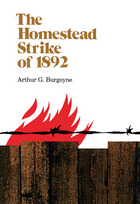

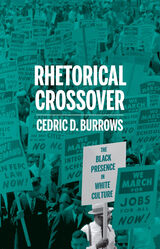
In music, crossover means that a song has moved beyond its original genre and audience into the general social consciousness. Rhetorical Crossover uses the same concept to theorize how the black rhetorical presence has moved in mainstream spaces in an era where African Americans were becoming more visible in white culture. Cedric Burrows argues that when black rhetoric moves into the dominant culture, white audiences appear welcoming to African Americans as long as they present an acceptable form of blackness for white tastes. The predominant culture has always constructed coded narratives on how the black rhetorical presence should appear and behave when in majority spaces. In response, African Americans developed their own narratives that revise and reinvent mainstream narratives while also reaffirming their humanity. Using an interdisciplinary model built from music, education, film, and social movement studies, Rhetorical Crossover details the dueling narratives about African Americans that percolate throughout the United States.
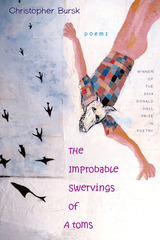
Winner of the 2004 Donald Hall Prize in Poetry
The Improbable Swervings of Atoms follows the comedic, often painful, physical and emotional travails of a young boy growing up in 1950s America. He watches the McCarthy hearings, conquers the Congo, assassinates the president, has his head stuffed into a toilet, drops his uniform on the fifty-yard line, and tries to make sense of Lucretius’s De Rerum Natura.
The poems engage history in a very intimate way, revealing how a boy, as he matures, attempts to understand the world around him, his own physical development, the people in his life, and what it means to live in a country and time where it is impossible to disengage oneself from world events—where, in fact, the quest for identity is an act that requires one to rewrite history in personal terms.
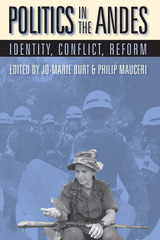
The Andean region is perhaps the most violent and politically unstable in the Western Hemisphere. Politics in the Andes is the first comprehensive volume to assess the persistent political challenges facing Bolivia, Colombia, Ecuador, Peru, and Venezuela.
Arguing that Andean states and societies have been shaped by common historical forces, the contributors' comparative approach reveals how different countries have responded variously to the challenges and opportunities presented by those forces. Individual chapters are structured around themes of ethnic, regional, and gender diversity; violence and drug trafficking; and political change and democracy.
Politics in the Andes offers a contemporary view of a region in crisis, providing the necessary context to link the often sensational news from the area to broader historical, political, economic, and social trends.
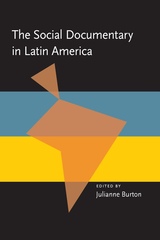
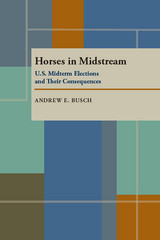
Horses in Midstream breaks the mold of midterm election literature by focusing on the consequences of midterm elections rather than on the causes of the anti-administration pattern of those elections. The book concludes that the midterm pattern has two primary consequences: it stymies the President and provides an opportunity for the revitalization of the opposition party—and that numerical losses by the President's party is really only a small part of the equation. Consequently, midterm elections can be considered an additional check in the U.S. political system, acting as a mechanism that helps to assure rough two party balance.
In examining the historical results from midterm elections dating back to 1894 and extending to the surprising result of 1994 and 1998, Busch has uncovered seven consistent ways in which the president and his party are harmed by midterm elections. These elections unfavorably alter the composition of congress, both between the parties and within the President's own party; they deprive the President of the plebiscitary power derived from his original electoral mandate; they give an intangible sense of momentum to the opposition party, leading to renewed opportunities for the opposition to put forward new leaders and to develop winning issues; they exacerbate splits within the President's own party; and they provide the opposition party with expanded party-building opportunities at the state level. Busch also places the midterm elections into four categories: "preparatory" midterms, which contribute to a subsequent change in party control of the Presidency; "calibrating" midterms in which voters slow but do not reverse extraordinary periods of Presidentially-driven change; "normal" midterms when midterm elections stymie the President without contributing to a White House takeover; and the rare "creative exceptions" when an administration escapes the midterm curse at the polls and find themselves invigorated rather than weakened. Busch's new approach to midterm elections, his well supported conclusions, and his clear, consistent style will certainly be of interest to political scientists and will translate well to the classroom.

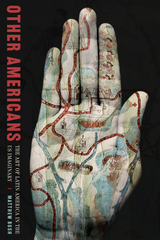
Grounded in perspectives of affect theory, Other Americans examines the writings of Roberto Bolaño and Daniel Alarcón; films by Alfonso Cuarón, Claudia Llosa, Matt Piedmont, and Joel and Ethan Coen; as well as the Netflix serials Narcos and El marginal. These widely consumed works about Latin America—equally balanced between narratives produced in the United States and in the region itself—are laden with fear, anxiety, and shame, which has an impact that exceeds the experience of reception. The negative feelings encoded in visions of Latin America become common coinage for US audiences, shaping their ideological relationship with the region and performing an affective interpellation. By analyzing the underlying melodramatic structures of these works that would portray Latin America as an implicit other, Bush examines a process of affective comprehension that foments an us/them, or north/south binary in the reception of Latin America’s globalized art.
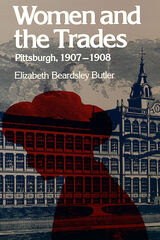
Despite Pittsburgh's image as a male-oriented steel town, many women also worked for a living-rolling cigars, canning pickles, or clerking in stores. The combination of manufacturing, distribution, and communication services made the city of national economic developments.
What Butler found in her visits to countless workplaces did not flatter the city, its employers, or its wage earners. With few exceptions, labor unions served the interests of skilled males. Women's jobs were rigidly segregated, low paying, usually seasonal, and always insecure. Ethnic distinctions erected powerful barriers between different groups of women, as did status hierarchies based on job function.
Professor Maurine Weiner Greenwald's introduction provides biographical sketches of Butler and photographer Lewis Hine and examines the validity of Butler's assumptions and findings, especially with regard to protective legislation, women worker's “passivity,” and working-class family strategies.
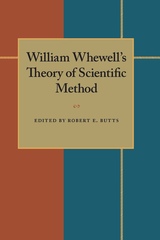
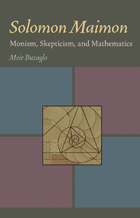
This provides the key to understanding Maimon’s solution to Kant’s quid juris question concerning the connection between intuition and concept in mathematics. Maimon’s original approach avoids dispensing with intuition (as in some versions of logicism and formalism) while reducing the reliance on intuition in its Kantian sense. As Buzaglo demonstrates, this led Maimon to question Kant’s ultimate rejection of the possibility of metaphysics and, simultaneously, to suggest a unique type of skepticism.
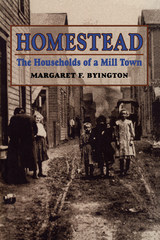
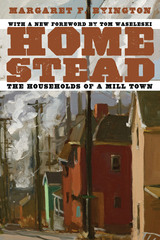
First published in 1910 in the classic Pittsburgh Survey, this pioneering work of American social history, reproduced in its entirety, describes daily life in a community that was dominated economically and physically by the giant Homestead Works of the United States Steel Corporation. The town of Homestead, just across the Monongahela River from Pittsburgh, developed as a completely separate city—a true mill town settled by newer immigrants and shaped in its attitudes by the infamous Homestead Strike of 1892, which significantly set back unionization efforts in the steel industry. Homestead:The Households of a Mill Town not only focuses on the plight of the American steel worker in the late nineteenth and early twentieth century, it also explores the domestic and community aspects of life in that time period.
READERS
Browse our collection.
PUBLISHERS
See BiblioVault's publisher services.
STUDENT SERVICES
Files for college accessibility offices.
UChicago Accessibility Resources
home | accessibility | search | about | contact us
BiblioVault ® 2001 - 2024
The University of Chicago Press









